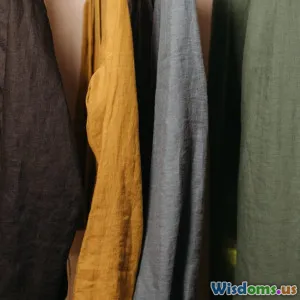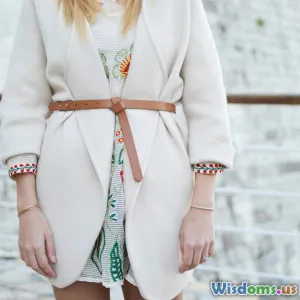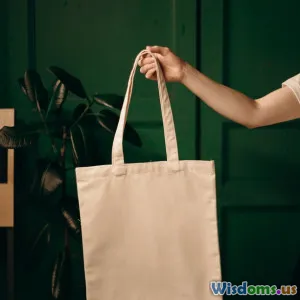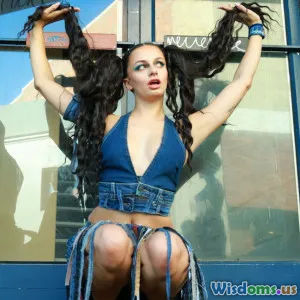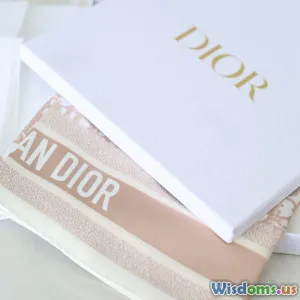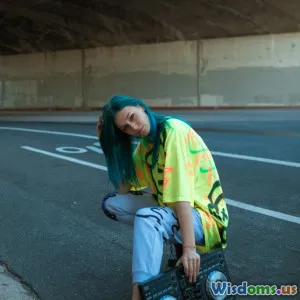
Why Are Gen Z Shoppers Obsessed With Y2K Fashion Trends
8 min read Explore why Gen Z has embraced Y2K fashion trends, blending nostalgia, technology, and self-expression in a digital age. (0 Reviews)
Why Are Gen Z Shoppers Obsessed With Y2K Fashion Trends?
Fashion is cyclical, but every trend revival carries its own cultural fingerprints. Among the latest waves reshaping style, none is more striking than Gen Z’s passionate embrace of Y2K fashion. This early-2000s aesthetic—think baby tees, low-rise jeans, butterfly clips, and an unmistakable glossy sheen—has dominated social media feeds, celebrity closets, and retail shelves. But what fuels this modern fascination with a style era that predates most Gen Zers’ childhoods?
Introduction: A Digital Generation's Nostalgic New Frontier
Y2K, shorthand for “Year 2000,” refers not just to a time but an attitude—futuristic optimism blurred with early internet culture, technology’s baby steps, and unapologetic flamboyance in style. Gen Z shoppers, born roughly between 1997 and 2012, have never lived through the height of Y2K but find something evocatively magnetic about it. It’s a paradoxical nostalgia: a longing for a past they didn’t experience firsthand, entwined with a vibrant, digital-native reinterpretation that’s entirely their own.
This article unpacks the cultural, technological, and social dynamics driving Gen Z’s obsession with Y2K fashion, highlighting how nostalgia merges with identity, social commentary, and digital influence.
The Roots of Y2K Fashion
Before exploring why Gen Z resonates with Y2K, understanding the fashion ethos of the original era is essential. Y2K fashion embodies early internet culture, pop stars like Britney Spears and Destiny’s Child, and rapid technological change. Key characteristics include:
- Bold colors and iridescence: Metallics, holographics, and shiny fabrics symbolized futuristic optimism.
- Playful, exaggerated silhouettes: Crop tops, flared pants, and platform shoes created distinctive shapes.
- Tech-inspired motifs: Logos of digital culture and tech brands appeared prominently.
This era’s clothes reflected a society both anxious and hopeful about the future, merging high tech with low-key kitsch.
Why Gen Z is Drawn to Y2K Fashion
1. A Fresh Take on Nostalgia
Unlike millennials who grew up with this style, most Gen Z members connect with Y2K fashion through a lens sharpened by the internet and social media. TikTok and Instagram, teeming with flashbacks, memes, and vintage aesthetics, serve as gateways. This new form of retromania allows Gen Z to reimagine an era as cool, rebellious, and avant-garde rather than outdated.
Dr. Jane McCarthy, a cultural studies professor, notes: “Nostalgia for Gen Z is less about personal memory and more a conduit for identity experimentation. Y2K fashion lets them play with a retro aesthetic without the temporal baggage.”
2. Digital Culture and Self-Expression
Y2K’s glossy, maximalist vibe syncs neatly with digital storytelling platforms where visuals and aesthetics define social capital. Gen Z frequently curate their online presence with bold, eye-catching styles reminiscent of Y2K to stand out in visually saturated feeds.
For example, the revival of low-rise jeans and tiny handbags on TikTok is often paired with carefully styled makeup and accessories, making a hyper-visual statement. The resurgence is further fueled by influencers and celebrities like Bella Hadid and Billie Eilish, who blend Y2K inspirations with contemporary fashion, creating culturally viral moments.
3. Unapologetic Individualism and Rebellion
The Y2K style also appeals to Gen Z’s desire to break from normative fashion expectations. Much like the era it hails from, this trend encourages mixing textures, colors, and silhouettes without pretense. This DIY attitude aligns with Gen Z’s broader trend toward inclusivity and authenticity in lifestyle choices.
Illustrating this, move over minimalist wardrobes—Gen Z flaunts their outfits in a playful, often over-the-top fashion that defies traditional aesthetics. This isn’t just style; it’s a statement about freedom and fluid identity.
4. Eco-consciousness and Vintage Revival
In an era deeply concerned with sustainability, thrifting and vintage shopping are cultural cornerstones for Gen Z. Y2K clothing, often found in secondhand shops, allows eco-conscious shoppers to indulge in stylish trends without supporting fast fashion’s environmental toll.
Platforms like Depop have been instrumental; Gen Z consumers buy and sell Y2K-era clothing, turning it into a vibrant marketplace that combines sustainability with style innovation. This trend is not only about wearing a look—it’s about connecting with an ethical consumer practice.
Data and Market Impact
The commercial interest around Y2K fashion is substantial. A report from Edited in 2023 noted a 150%+ year-over-year increase in retail searches and sales for Y2K-inspired items such as flared jeans, baby tees, and trucker hats. Fast fashion brands like Zara and Urban Outfitters have incorporated Y2K pieces prominently in their collections.
Furthermore, consumer data reveals that shoppers aged 18-24 are leading this momentum, affirming Gen Z’s hold over the trend. Market analysts speculate this could intensify the retro wave globally as designers from Gucci to Christopher John Rogers lean more heavily into early 2000s-inspired aesthetics.
Real-World Examples: Celebrity and Media Influence
Celebrities act as catalysts for Y2K fashion’s revival. Miley Cyrus’ eclectic, Y2K-infused stage looks, or the craze around Zendaya’s juicy couture velour sets on red carpets, propel accessibility and desirability of the trend. This interplay between celebrity culture and street style fuels rapid adoption.
Social media, especially TikTok, doesn’t just recycle past looks—it innovates. Creators remix Y2K staples with modern touches or humorous twists, fostering a communal experiment in fashion.
Conclusion: Y2K Fashion as a Portal for Gen Z
Gen Z’s fascination with Y2K fashion is more than a style resurgence. It’s a complex cultural movement where nostalgia, digital identity, sustainable consumption, and individual expression converge.
This trend evidences how young consumers are rewriting fashion codes, integrating a past era’s aesthetics with contemporary values and technologies. For retailers, designers, and observers, Y2K’s comeback signals that fashion is as much about cultural connection as it is about clothes.
Ultimately, Gen Z’s obsession with Y2K fashion invites us to rethink what nostalgia means in a digital world—and how style serves as a living dialogue between past and present.
References:
- Edited Retail Analytics, 2023
- Dr. Jane McCarthy, The Cultural Study of Fashion Trends, 2022
- TikTok fashion trend reports, 2023
- Depop platform usage statistics, 2023
- Interviews with Gen Z consumers and fashion influencers
Rate the Post
User Reviews
Popular Posts










